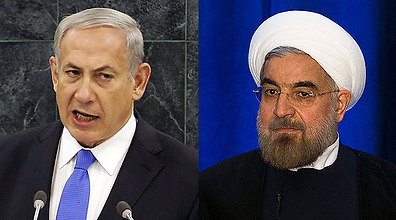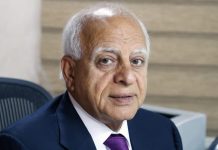ISIS’s war on the state
Abdullah Hamidaddin/Al Arabiya/Friday, 7 August 2015
On Thursday, 15 people were killed in a bombing of a mosque in Abha in southern Saudi Arabia. The Islamic State of Iraq and Syria (ISIS) claimed responsibility. This is the third mosque that ISIS has targeted in Saudi Arabia, and the fourth in the Gulf – in May, two mosques were targeted in the Eastern Province of the kingdom, and one in Kuwait. Those three mosques were used by Shiites – now ISIS targeted a Sunni mosque, yet the underlying motivations are the same.
At the time, two opinions were circulating about the motivations of ISIS. The first was that it was targeting Shiites because they were heretics, so the motivation was assumed to be sectarian. This was a simple explanation and easiest to accept, especially in light of the prevalence of sectarian interpretations of the politics of the region, which assumes that there is a Sunni-Shiite war and that this attack is one small battle in that war.
There was, however, a second opinion that is more complex and starts with the assumption that ISIS is bloody, radical and extremist, but also rational in its calculations; rational in the sense that its tactics follow cost/benefit logic. This strand of thought concedes that ISIS considers Shiites to be heretics and that its ideal world is one without them, but it did not attack the mosques because Shiites are heretics.
There were no realistic sectarian motives in ISIS’s attack of Shiite mosques. Rather, it was looking for high-impact targets. It wanted to attack the Saudi government while avoiding hurting Sunni citizens. It wanted to delegitimize the government by attacking citizens, and its choice of Shiite citizens was in the hope that it could generate tension between Shiite Saudis and the government.
We all know that there are Shiite radicals conveying a discourse of Shiite victimization, claiming that Shiites are targets of a systemic onslaught and marginalization by the Saudi government. So ISIS may have calculated that by targeting Shiite mosques it would legitimize those radical voices among a wider Shiite population, leading to a schism between the government and Shiites.
Radical vs. religious zealots
ISIS, according to this analysis, did not want to target Sunni citizens for fear of losing popularity among Saudi radical zealots. Radical zealots are different from religious zealots. The former are politicized religious extremists who reject the current political order and aim for a caliphate of some sort, and whose principal foes are governments.
This is a war ISIS wants to wage against the Saudi state, but more fundamentally against the idea of a modern state in whatever form.
The latter are religious puritans who reject modernity (but embrace technology) and existing lifestyles, and aim for a pious society strictly ruled by sharia and whose principal foes are liberals and secularists. Radical zealots are willing to kill anyone who stands in their way. Religious zealots, however, would only go as far as disrupting social order, which is not pleasant but at least not murderous.
ISIS’s main pool of recruits comes from radical zealots, so it is keen to retain its legitimacy among them. This is especially so because radical zealots are a very small minority in the Saudi population, and ISIS cannot afford to lose its legitimacy among a single one of them.
Radical zealots have long debated among themselves the legitimacy of targeting individuals who are not government affiliates, so the safer route for ISIS would be to focus its attacks only on those targets that all radical zealots consider legitimate. In Saudi Arabia, those targets are Shiites and security forces. After targeting Shiites, it is now targeting security forces.
The underlying logic of the attack on a Shiite mosque and the security forces mosque is that this is a war ISIS wants to wage against the Saudi state, but more fundamentally against the idea of a modern state in whatever form. This is a war being waged against an order, not just a government. It is a war in which all of us will eventually become targets, so all of us need to stand against it.
The pretexts behind U.S. protection of Syrian rebels
Maria Dubovikova/Al Arabiya
Friday, 7 August 2015
Washington and Moscow have been recently trying to find common ground in resolving the Syrian crisis. Attempts have been made via phone calls between Presidents Barack Obama and Vladimir Putin, as well as through diplomatic contacts and expert consultations. The two sides have been assessing each other’s positions, limits and flexibility to make concessions.
Following these efforts, Obama decided to authorize air protection for U.S.-trained Syrian rebels fighting against the Islamic State of Iraq and Syria (ISIS) by bombing any force that attacks them, including the Syrian army. Washington is thereby pressing Moscow and Damascus, and showing them how far it is ready to go to achieve a transition in Syria, as it had previously been reluctant to involve U.S. military forces.
The decision to form an international coalition to hit ISIS in Iraq and Syria has caused much anxiety in Damascus and Moscow, as they expected Washington to use this opportunity to target the Syrian army.
By authorizing the protection of rebel forces, Washington is constricting the corridor for negotiations. Remarkably, this decision was announced just before the trilateral meeting in Doha of Russian, American and Saudi officials, whose agenda included Syria.
Little hope of political transition
Moscow and Washington understand the importance of the transition of power in Syria. In Doha, they renewed their call for a managed political transition. The difference between Washington and Moscow is in the perception of when it should be done. Russia considers the highest priority now to be the fight against ISIS, in which Syrian President Bashar al-Assad is a partner.
However, in a strategy that has not yet produced anything positive, Washington is trying to solve the Syrian internal problem and fight ISIS simultaneously. The problem is that the Syrian army is still one of the forces on the ground containing the spread of ISIS. Without the army, ISIS could spread further and take Damascus.
There is currently little hope for an adequate political transition, with more than 4 million Syrians as refugees, and disagreement over the mechanisms behind such a transition and the figures to be included. Another problem is that Russia’s influence on the Syrian regime is highly overestimated. Assad is not an easy counterpart to press and to push, and will not leave his post in the near future. By threatening to hit his army if it attacks U.S.-trained rebels, Washington is trying to convince him otherwise.
As U.S. Defense Secretary Ash Carter told lawmakers, only 60 recruits have passed their training. Already half the $500 million budget has reportedly been spent. Washington expects to have 3,000 recruits by the end of the year, so it is easy to see how high expenses will rise. Taking into account the estimated size of ISIS – between 20,000 and 200,000 militants – the number of trained rebels is a drop in the ocean.
By authorizing the protection of rebel forces, Washington is constricting the corridor for negotiations.
With air protection, they will hardly ever be involved in fighting as any battle will be prevented by massive U.S. airstrikes. Another problem is that if they are trained like the post-Saddam Iraqi army was, they will be virtually useless. Thus announcing air protection for rebels is mostly a pretext for intervening in the Syrian crisis and sending a strong message to Damascus and Moscow. The possibility of a transition of power in Syria remains a distant prospect.






















